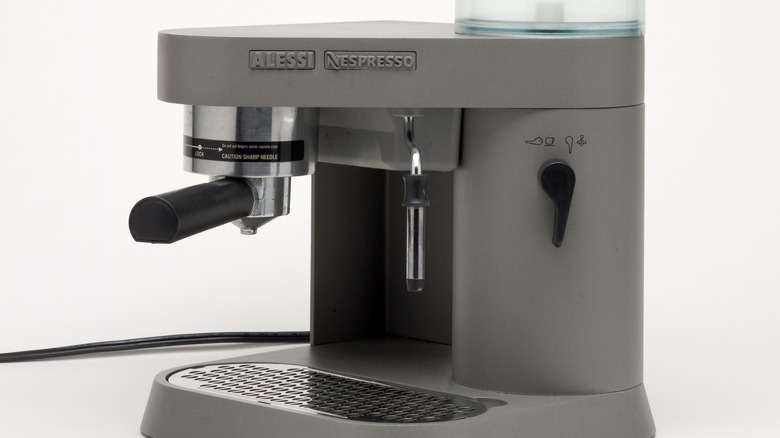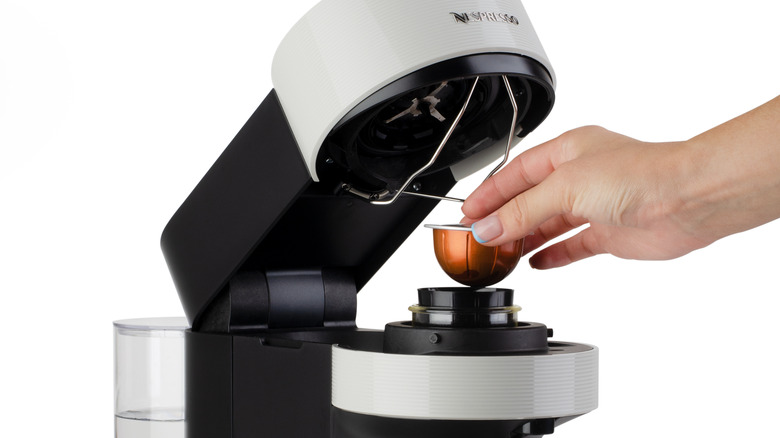This Is What The Very First Nespresso Machines Were Like
For most people in 1986, getting a morning espresso meant a trip to the corner café — and that was only if you lived in Europe or a major U.S. city. Starbucks was just a small (but growing) West Coast coffee purveyor with a handful of stores, so many U.S. residents were out of luck, unless they had a machine at home. A few upscale machines were available for hardcore coffee connoisseurs, but grinding beans and brewing good espresso at home was still a challenge. The Nespresso company, brand-new at the time, jumped into the espresso machine market at that exact moment with a coffee capsule system designed to make a reliably delicious shot of caffeine easy for everyone.
Nespresso's first two machines hit the market with a look that somewhat copied that of standard espresso makers, including a pod holder resembling the portafilter that holds ground beans in a café-style machine. With the rather techno-sounding monikers C-100 and C-1100, plus a spare, square outer design, Nespresso first hoped to capture the at-work coffee business with its new less-mess system. Within a few years, the machines were also offered to home consumers.
The sincerest form of flattery: imitation
It makes perfect sense to bring a new machine to market with features consumers understand. Users of the early Nespresso machines who had seen traditional espresso makers could instinctively comprehend where to put the coffee capsules. The portafilter-style pod holder was a standard design feature for almost 20 years, even through Nespresso's futuristic machine redesigns with new colors and shapes to attract upscale customers. In 2004, the portafilter look was replaced by the current top-loading capsule system, which became the standard position for pod loading in all future machines (including Nespresso's larger-pod Vertuo system).
The coffee capsule situation was also basic in the beginning. Nespresso launched with just four capsule choices for traditional Italian-roast coffees, and these made history for the brand (one was even decaffeinated). The aluminum exteriors came in muted shades, and the capsules were designed to only produce one traditional shot of espresso, unlike the huge variety of coffee flavors and cup sizes you can pop into the top of your machine today.

